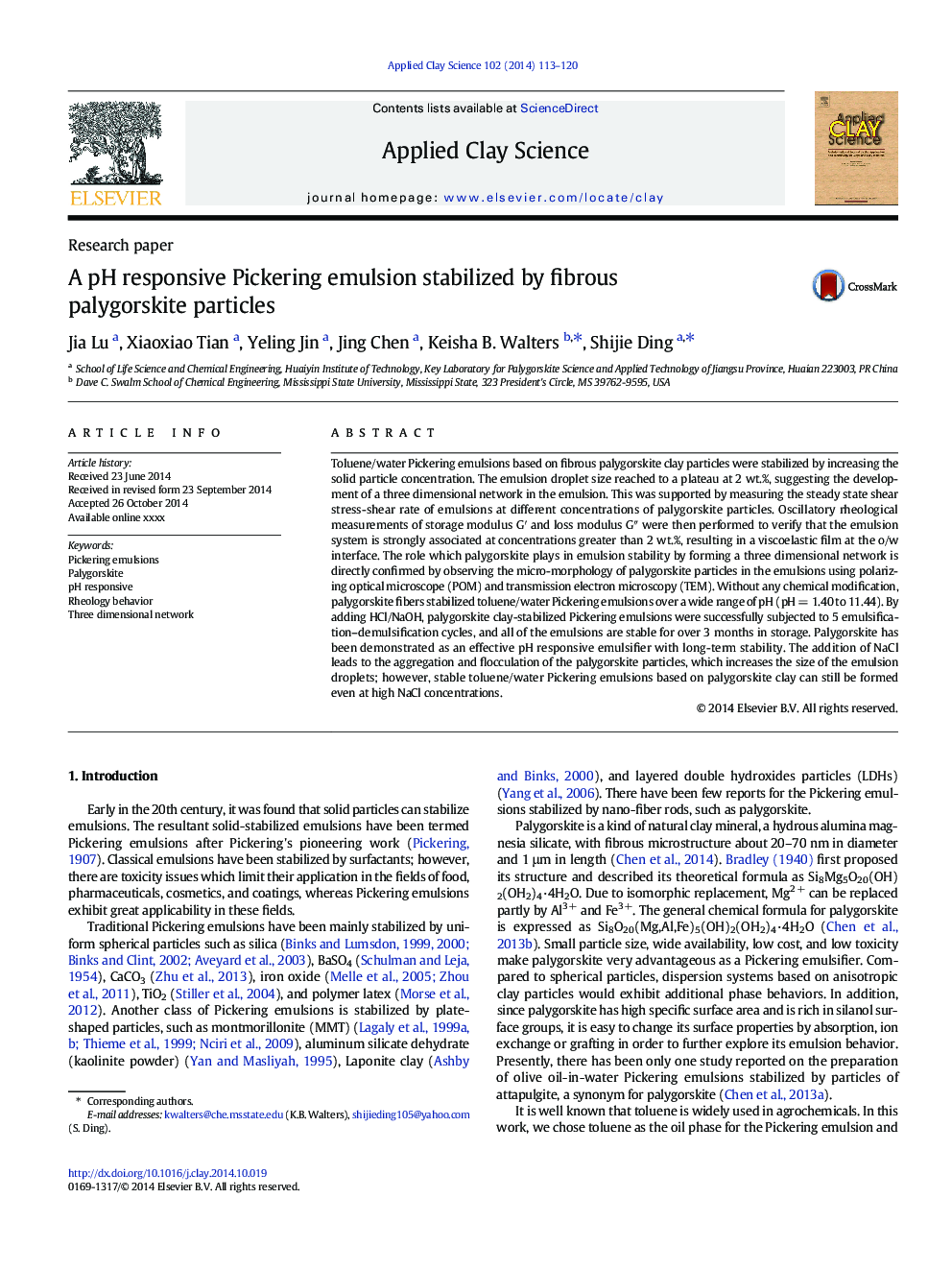| Article ID | Journal | Published Year | Pages | File Type |
|---|---|---|---|---|
| 8046621 | Applied Clay Science | 2014 | 8 Pages |
Abstract
Toluene/water Pickering emulsions based on fibrous palygorskite clay particles were stabilized by increasing the solid particle concentration. The emulsion droplet size reached to a plateau at 2Â wt.%, suggesting the development of a three dimensional network in the emulsion. This was supported by measuring the steady state shear stress-shear rate of emulsions at different concentrations of palygorskite particles. Oscillatory rheological measurements of storage modulus Gâ² and loss modulus Gâ³ were then performed to verify that the emulsion system is strongly associated at concentrations greater than 2Â wt.%, resulting in a viscoelastic film at the o/w interface. The role which palygorskite plays in emulsion stability by forming a three dimensional network is directly confirmed by observing the micro-morphology of palygorskite particles in the emulsions using polarizing optical microscope (POM) and transmission electron microscopy (TEM). Without any chemical modification, palygorskite fibers stabilized toluene/water Pickering emulsions over a wide range of pH (pHÂ =Â 1.40 to 11.44). By adding HCl/NaOH, palygorskite clay-stabilized Pickering emulsions were successfully subjected to 5 emulsification-demulsification cycles, and all of the emulsions are stable for over 3Â months in storage. Palygorskite has been demonstrated as an effective pH responsive emulsifier with long-term stability. The addition of NaCl leads to the aggregation and flocculation of the palygorskite particles, which increases the size of the emulsion droplets; however, stable toluene/water Pickering emulsions based on palygorskite clay can still be formed even at high NaCl concentrations.
Related Topics
Physical Sciences and Engineering
Earth and Planetary Sciences
Geochemistry and Petrology
Authors
Jia Lu, Xiaoxiao Tian, Yeling Jin, Jing Chen, Keisha B. Walters, Shijie Ding,
